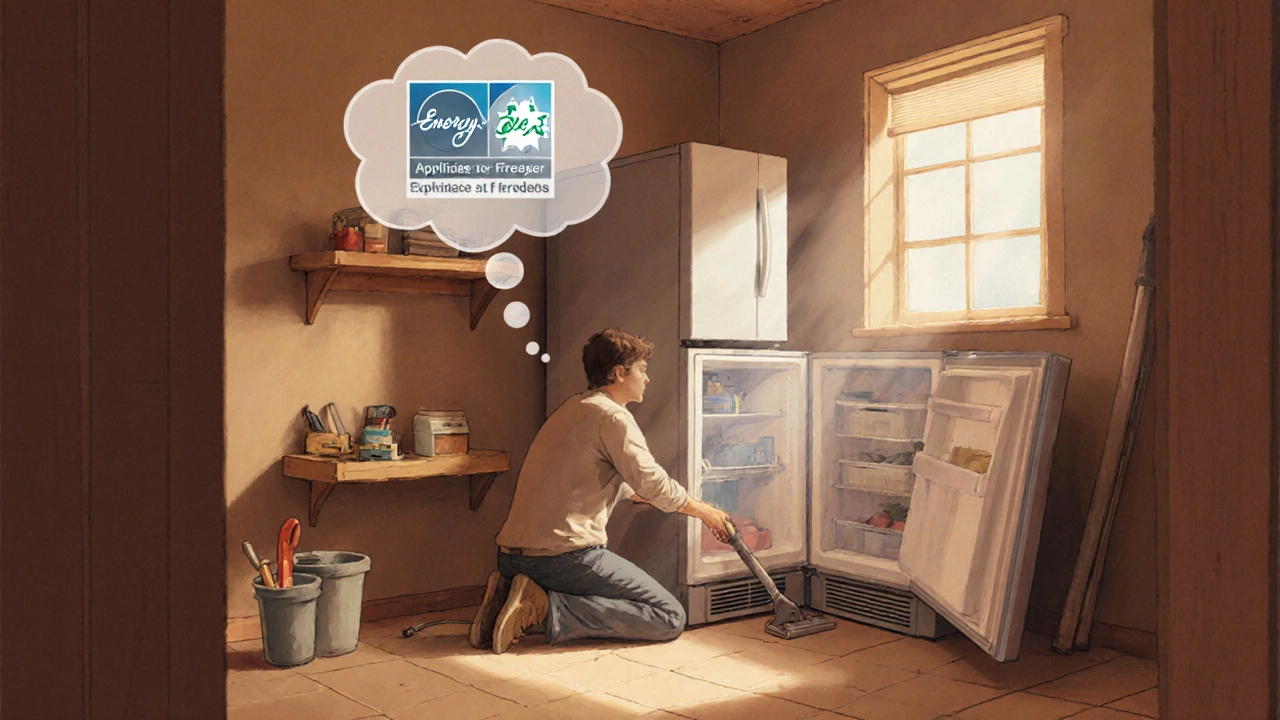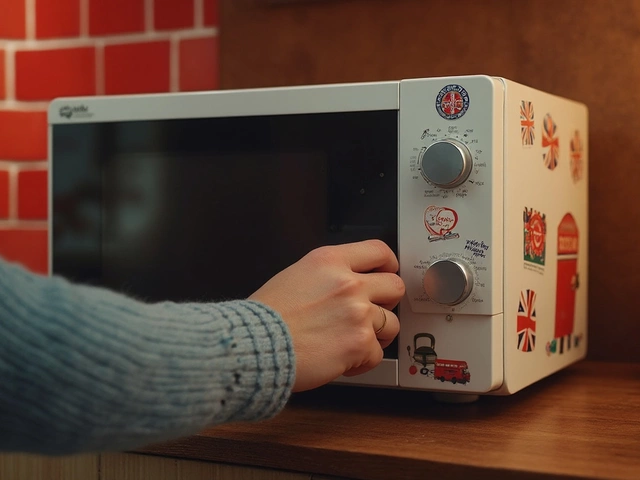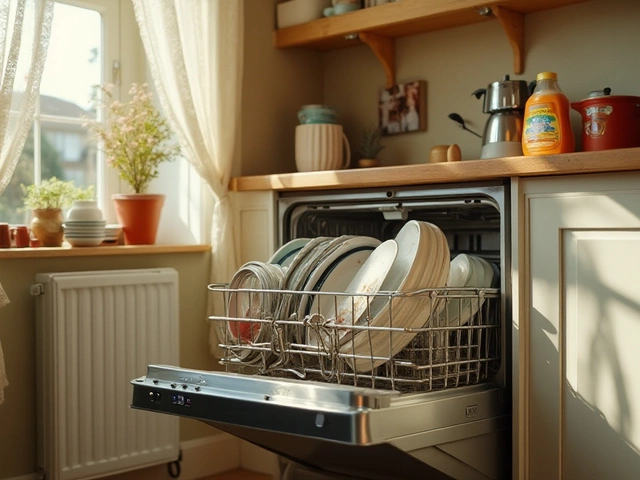Freezer Lifespan Calculator
Estimate Your Freezer's Remaining Life
Input your freezer type and maintenance habits to see your estimated lifespan
Your Estimated Freezer Lifespan
For commercial units, maintenance is critical for meeting AS 2157 standards (10+ years)
When you hear the click of a freezer door, you expect food to stay frozen for months, maybe years. But how long will the appliance itself keep working before it needs a major fix or replacement? Knowing the typical freezer life expectancy helps you budget, schedule maintenance, and decide when it’s time to shop for a new unit.
Quick Takeaways
- Average residential freezer lasts 10‑15 years; commercial units can reach 20 years.
- Chest freezers generally outlive upright models by 2‑3 years.
- Regular cleaning, stable temperature settings, and prompt repairs add 2‑5 years to lifespan.
- Key components that fail most often: compressor, thermostat, and defrost system.
- Check the manufacturer’s warranty and Australian Standard AS 2157 for minimum durability expectations.
What Exactly Is a Freezer?
Freezer is a sealed appliance that maintains temperatures at or below 0 °C (32 °F) to preserve food for long periods. It comes in two main residential styles-chest and upright-and in larger commercial formats for supermarkets and restaurants.
Typical Lifespan by Freezer Type
| Freezer Type | Average Lifespan | Energy Efficiency Rating | Common Failure Points |
|---|---|---|---|
| Chest freezer (residential) | 12‑15 years | Star 5-6 (rated by Australian Government) | Compressor, gasket wear |
| Upright freezer (residential) | 10‑13 years | Star 4-5 | Thermostat, fan motor |
| Commercial upright | 15‑20 years | Star 5+ | Refrigerant leak, defrost timer |
| Commercial chest | 18‑22 years | Star 5+ | Compressor overload, door seal |
Key Factors That Influence Longevity
Not every freezer ages at the same rate. The following variables can add or subtract years from the expected service life.
- Quality of Components: Premium compressors and sealed‑tube thermostats tend to last longer than cheaper, sealed‑box versions.
- Usage Patterns: Constantly opening the door, storing hot items, or running the unit at extreme low temperatures stresses the compressor.
- Maintenance Routine: Cleaning condenser coils every six months, defrosting when ice builds over 0.5 cm, and checking door gaskets keep the system efficient.
- Installation Environment: A well‑ventilated, dry area prevents moisture‑related rust on metal parts and protects electrical wiring.
- Manufacturer Warranty: Most Australian brands back their freezers for 2-5 years, signalling confidence in component durability.

How to Spot Early Signs of Trouble
Being able to catch a problem before the compressor quits can buy you a few extra years. Look out for these red flags:
- Temperature fluctuations: If the internal thermometer swings more than 5 °C in a day, the thermostat or sensor may be failing.
- Excessive frost buildup: Ice thicker than 0.5 cm on the walls indicates a faulty defrost timer or heater.
- Unusual noises: Grinding or clicking sounds often point to a worn‑out compressor or fan motor.
- Water leakage: Puddles underneath the unit suggest a clogged drain tube or a broken door seal.
- Higher energy bills: A sudden increase in electricity consumption usually means the compressor is working harder than it should.
Maintenance Checklist to Extend Your Freezer’s Life
Schedule these tasks yearly, and you’ll likely see the warranty‑specified lifespan stretched toward the upper range.
- Unplug the unit and remove all contents.
- Vacuum or brush the condenser coils (usually at the back or underneath).
- Inspect and clean the door gasket with warm, soapy water; replace if cracked.
- Defrost manually if ice exceeds 0.5 cm; wipe dry before restarting.
- Check the temperature setting; -18 °C is optimal for most food preservation.
- Run a quick diagnostic (many newer models have a built‑in TEST mode) to verify sensor readings.
- Document any unusual sounds or smells and call a qualified repairer early.
When Replacement Beats Repair
Even with diligent care, a freezer can reach a point where fixing it costs more than buying a new one. Use this rule of thumb: if repair costs exceed 50 % of the price of a comparable new unit, replace it.
For a typical 300‑liter upright freezer priced at AU$900, a repair bill of $500 + indicates it’s time to shop around. New models now offer higher Star ratings and more efficient inverter compressors, which can lower your electricity bill by up to 30 %.

Regional Considerations: Australian Climate and Standards
Living in Adelaide means you experience hot summers and mild winters. High ambient temperatures raise the compressor’s workload, potentially shaving a year or two off the lifespan if the unit isn’t placed in a shaded, ventilated spot.
Australian Standard AS 2157 sets a minimum 10‑year service life for household freezers. Choosing a model that meets or exceeds this standard gives you a solid baseline for durability.
Frequently Asked Questions
What is the average life expectancy of a chest freezer?
Chest freezers typically last 12‑15 years, thanks to their simple design, fewer moving parts, and better sealing.
Do newer inverter compressors extend freezer lifespan?
Yes. Inverter compressors run at variable speeds, reducing wear and heat buildup. They often add 2‑4 years to the expected service life.
How often should I clean the condenser coils?
At least once a year, preferably before the hot summer months. In dusty environments, a six‑month interval is safer.
Can I replace a faulty thermostat myself?
If you have basic electrical knowledge, you can swap a thermostat, but always disconnect power first and follow the manufacturer’s wiring diagram. For most people, calling a licensed technician is recommended.
What warranty should I look for when buying a new freezer?
A minimum of two‑year parts and labour warranty is standard in Australia. Premium brands often extend this to five years for the compressor.
Bottom Line
Understanding the expected service life of your freezer helps you plan maintenance, avoid surprise breakdowns, and decide the right moment to upgrade. By choosing a reputable brand, keeping the unit clean, and addressing early warning signs, you can comfortably reach-or even exceed-the 10‑15‑year benchmark for most residential models.







